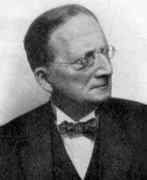Person: Kneser (2), Hellmuth

Hellmuth Kneser was a Estonian-born German mathematician best known for his work in group theory and topology.
Mathematical Profile (Excerpt):
- Schmidt's lectures at Breslau were to prove an important influence on Hellmuth Kneser's mathematical development.
- From Breslau Kneser went to Göttingen to undertake research.
- After the award of his doctorate Kneser remained at Göttingen.
- His first student was Baer and, at Göttingen, Kneser supervised Baer's doctoral thesis on the classification of curves on surfaces.
- Kneser did not remain long at Göttingen for, in 1925, he succeeded Radon to a chair in Greifswald.
- Kneser spent twelve years at Greifswald before he accepted the chair at Tübingen in 1937.
- When Süss died in 1958 it was Kneser who took over the scientific leadership of the Oberwolfach Institute.
- Describing the areas of mathematics on which Kneser worked is difficult since his work was so wide ranging throughout mathematics.
- Kneser published on sums of squares in fields, on groups, on non-Euclidean geometry, on Harald Bohr's almost periodic functions, on iteration of analytic functions, on the differential geometry of manifolds, on local uniformisation and boundary values.
- After Kneser moved to Tübingen the emphasis in his work changed.
- Martin Kneser, another mathematician, is Hellmuth Kneser's son.
Born 16 April 1898, Dorpat, Russian Empire (now Tartu, Estonia). Died 23 August 1973, Tübingen, Germany.
View full biography at MacTutor
Tags relevant for this person:
Algebra, Origin Estonia
Thank you to the contributors under CC BY-SA 4.0! 

- Github:
-

- non-Github:
- @J-J-O'Connor
- @E-F-Robertson
References
Adapted from other CC BY-SA 4.0 Sources:
- O’Connor, John J; Robertson, Edmund F: MacTutor History of Mathematics Archive
